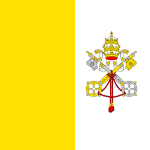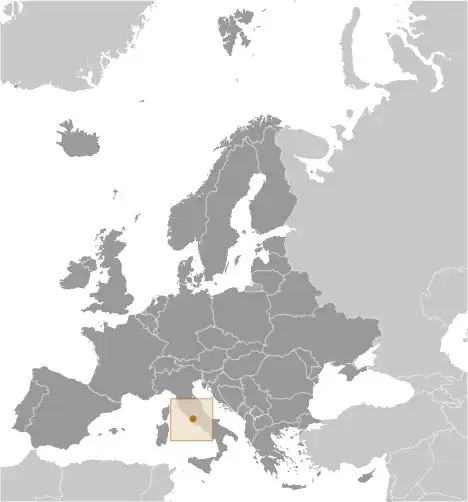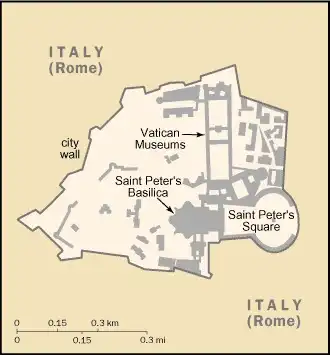
Holy See (Vatican City State)
Veröffentlicht: 18. June 2022 - Letztes Update: 28. February 2025
Country Data Dashboard

Population
1,000 (2022 est.)
Growth: 0% (2014 est.)
GDP
no data
Area
0 sq km
| Government type: | ecclesiastical elective monarchy; self-described as an "absolute monarchy" |
| Capital: | Vatican City |
| Languages: | Italian, Latin, French, various other languages |
People & Society
Ethnicity (2017)
Religion
Age structure
No image available.
Economy
Economic overview
limited, tourism-based economy; euro user but issues commemorative stamps and coins; solar energy producer; some printing industry to support museums and religious needs
Real GDP (purchasing power parity) in Billion $
no data
Real GDP per capita in $
No data
Geography
Map

Area
Natural resources
- none 🚫
Climate
temperate; mild, rainy winters (September to May) with hot, dry summers (May to September)
Historical Background Information
Popes in their secular role ruled portions of the Italian peninsula for more than a thousand years until the mid-19th century, when the newly established Kingdom of Italy seized many of the Papal States. In 1870, the pope's holdings were further circumscribed when Rome itself was annexed. Disputes between Italy and a series of "prisoner" popes were resolved in 1929 by three Lateran Treaties, which established the independent state of Vatican City and granted Roman Catholicism special status in Italy. In 1984, a concordat between the Holy See and Italy modified some of the earlier treaty provisions, including the primacy of Roman Catholicism as the Italian state religion.
Present concerns of the Holy See include religious freedom, threats against minority Christian communities in Africa and the Middle East, the plight of refugees and migrants, climate change and the environment, conflict and war, nuclear weapons, artificial intelligence, sexual misconduct by clergy, humanitarian issues, interreligious dialogue and reconciliation, and the application of church doctrine in an era of rapid change and globalization. About 1.3 billion people worldwide profess Catholicism, the world's largest Christian faith.
Present concerns of the Holy See include religious freedom, threats against minority Christian communities in Africa and the Middle East, the plight of refugees and migrants, climate change and the environment, conflict and war, nuclear weapons, artificial intelligence, sexual misconduct by clergy, humanitarian issues, interreligious dialogue and reconciliation, and the application of church doctrine in an era of rapid change and globalization. About 1.3 billion people worldwide profess Catholicism, the world's largest Christian faith.
